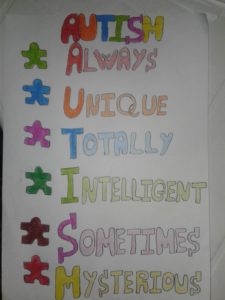 Two Types of Social Media for Teachers to Grow
Two Types of Social Media for Teachers to Grow
Aziz Soubai
Social media has now become extremely important in the life of every individual, and especially teachers, educators, and supervisors. It is a source of entertainment, learning, and connecting with people worldwide. In this post you may be a little surprised or even shocked when you see my favourite social media platforms and how I use them in my personal and professional life. I’m going to focus on two main platforms; one is full of distractions and can even lead to a serious addiction if not properly managed, while the other is quiet and purely professional.
Making the most of Facebook
I joined Facebook exactly on 15th November, 2012. Back then I was lost in the sea of different types of information that made up my Facebook feed at the time, which was mostly unrelated to what I did as a teacher or a language learner. I was trying to find a way to get out of the mess. My vision was blurred and I wasted a lot of time and energy on subjects and topics of zero quality and no benefit whatsoever. That was when I decided to create another account where I would only add people related to education and teaching foreign languages, especially English. I followed various ELT pages and joined closed and open groups like the iTDi page, Arizona State University, and Coursera mentors. After I did all that, my feed became a little cleaner and clearer; I now see only the things I’m interested in.
Improving your academic visibility
The next step was to find a way to increase my academic visibility and online presence, and I can say that Facebook is perfect for that purpose. The way to achieve this goal is quite simple. First of all, as a teacher and an educator I try to select and share what I do with my friends. I love writing, it is a huge passion of mine. So, most of the time I share my thoughts, articles, and poetry with my Facebook audience and followers. I also mainly focus on sharing what is related to my classroom practice. For example, after publishing an e-book on how to use grammar games for better language instruction, I received many comments, reactions and support from English teachers.
The second step to improve your academic visibility is to post what you do in your professional life as a teacher. Give reports on the different conferences you attend or the workshops and presentations you conduct. Documenting your experience on social media is of huge importance in our context. You can post pictures, share information about the event, links and your personal takeaways. I’m a huge fan of online learning and I think it is a great idea to let your online audience and friends know about the training or online learning experience you’ve gone through by sharing your achievements, digital certificates or badges. This is not done out of intellectual snobbery or in order to show off, but rather to grow as a language teacher and have a nice online presence. In fact, sometimes institutions and organizations may ask individuals to provide their Facebook account information to see their activity for potential job offers or scholarships.
Zero distractions on Edmodo
The other social media platform I want to talk about is truly amazing. It hosts teachers, administrative staff, and parents from around the world and lets you connect with your students by creating classes and groups entirely protected by codes. I’m talking about Edmodo. This platform allows you to do practically anything you want as a teacher. You can easily create free classes and invite students to join by a special code or through their emails. You can differentiate instruction by further creating smaller groups, which can be useful for learners who have particular language problems. Another amazing feature is called “badges”. The purpose of badges is to motivate students and make them use the system more frequently. Additionally, there is a possibility to connect and collaborate with teachers from other schools either locally or internationally.
Edmodo offers three types of accounts: for teachers, educators, supervisors, and administrators; for students and learners in general; and for parents. As it is a professional social network, there are zero distractions on Edmodo, so you can work at your own pace. You can join various professional development groups, but even then you won’t receive as many unnecessary notifications as on other platforms. In those groups, you can ask questions, offer suggestions or tips, and be sure you will receive helpful comments and answers from your online colleagues.
Considerations when choosing social media
Time is precious and social media may be consuming a lot of our time. It is crucial to select the type of social media you want to use in your own personal and professional life. It is also essential to see what is the added value or impact of this tool on you as a teacher. Does it make you grow? What do you learn from it? Do you have a particular professional learning network? If you reflect on these questions and make them guide you in your choices, you will absolutely spend less time online and use the tools that work for you, not against you.

 Three major pandemic lessons
Three major pandemic lessons
 To conclude, participating in this project was a tremendous eye-opener for me personally, for the students, and for the whole school. Society always regards autistic individuals as inferior creatures who lack social skills, and I hope that this project changed that view a little bit and our students became aware that autistic people can be creative, funny, social, and extremely intelligent.
To conclude, participating in this project was a tremendous eye-opener for me personally, for the students, and for the whole school. Society always regards autistic individuals as inferior creatures who lack social skills, and I hope that this project changed that view a little bit and our students became aware that autistic people can be creative, funny, social, and extremely intelligent.